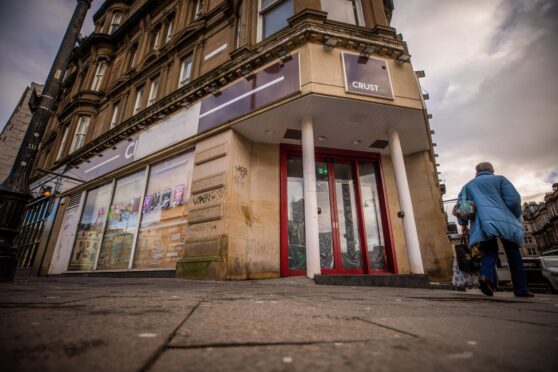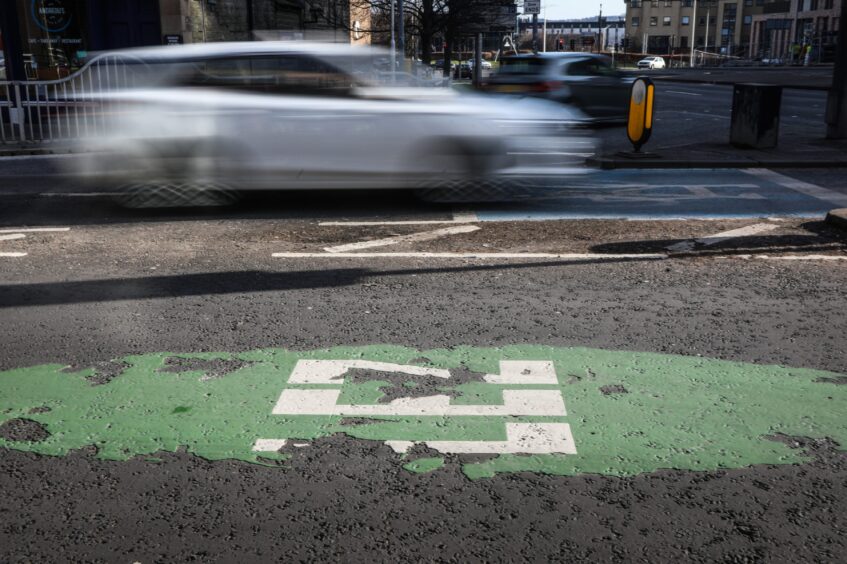
Almost one in five shops are lying empty in Scotland’s regional cities, an exclusive survey has found.
The DC Thomson data team have been tracking the health of Scotland’s high streets for almost a year. They now track the vacancy rates of more than 2,000 retail units across half of Scotland’s eight cities, covering Aberdeen, Dundee, Inverness and Perth.
The current data shows the lowest vacancy rate in Inverness at 8.10% and the highest level of empty units in Aberdeen, with the rate currently sitting at 19.50% – where a total of 112 premises are lying empty. This, however, is slightly down on previous figures.
In Dundee the figure is 98 shops, or 18% and in Perth it is 76 shops or 18.5%.
David Lonsdale, of the Scottish Retail Consortium, said many shops had been hard hit by the pandemic, and had struggled to recover.
He said: “These shop vacancy rates are deeply concerning. The harsh truth is, for much of Scotland, there have been precious few signs of much recovery from the pandemic. Most city-centre retailers were compelled to close during the pandemic, and even afterwards, while the majority of shoppers have returned, it has been hard to encourage all shoppers to return to high streets.
“When combined with weak sales and demand due to the cost-of-living crunch, and an every-increasing tax and regulatory burden from the Scottish Government facing customer-facing firms, it’s little surprise many town and city centres are floundering.”
An urban park, water sports and festivals: What future of high street might look like
Providing a better mix
He said the solution lay in towns repurposing some buildings to provide a better mix of residential accommodation, hospitality, leisure and cultural attractions.
He said retaining town centres as economic hubs was critical, but warned: “That’s made more difficult whilst we have a rates system that penalises businesses for operating from medium-sized and larger high street premises, and when some local authorities make it harder or more expensive for people to visit those high streets.”
“High streets and city centres are an economic ecosystem. They need a mix of shops, both large and small, cafes, bars, culture, and leisure alongside places for people to work and live.
“When some of these elements are removed, such as when large retailers are forced to pull out, it can begin a vicious cycle where there are fewer reasons for people to visit the high street, so the remaining businesses find it harder, and more and more have to close. The end result is gap-toothed boulevards with few interesting attractions, which can time to recover.”
Low Emission Zones
Meanwhile, in Aberdeen and Dundee, controversial Low Emission Zones, which ban older vehicles from their city centres, will be introduced in June.
It is a move many firms fear will further deter people from visiting their city centres.
Those who flout the rules will be captured by cameras using number plate recognition technology and face fines of £60, which double to £120 for second offences and double again to £240 for a third infraction. The fines are capped at £480 for those who enter the LEZ in non-compliant cars four times or more, but the cap is £960 for larger vehicles.
For the local councils concerned, the LEZs are necessary contributions towards national climate targets, which include reducing car use by 20% by 2030 and reaching net zero emissions by 2045.
Aberdeen City Council says its LEZ will create a “vibrant, accessible and safe city centre”.
Dundee says its LEZ will make the city a more “inclusive and desirable place to live”.

Enjoy the convenience of having The Sunday Post delivered as a digital ePaper straight to your smartphone, tablet or computer.
Subscribe for only £5.49 a month and enjoy all the benefits of the printed paper as a digital replica.
Subscribe © Mhairi Edwards
© Mhairi Edwards